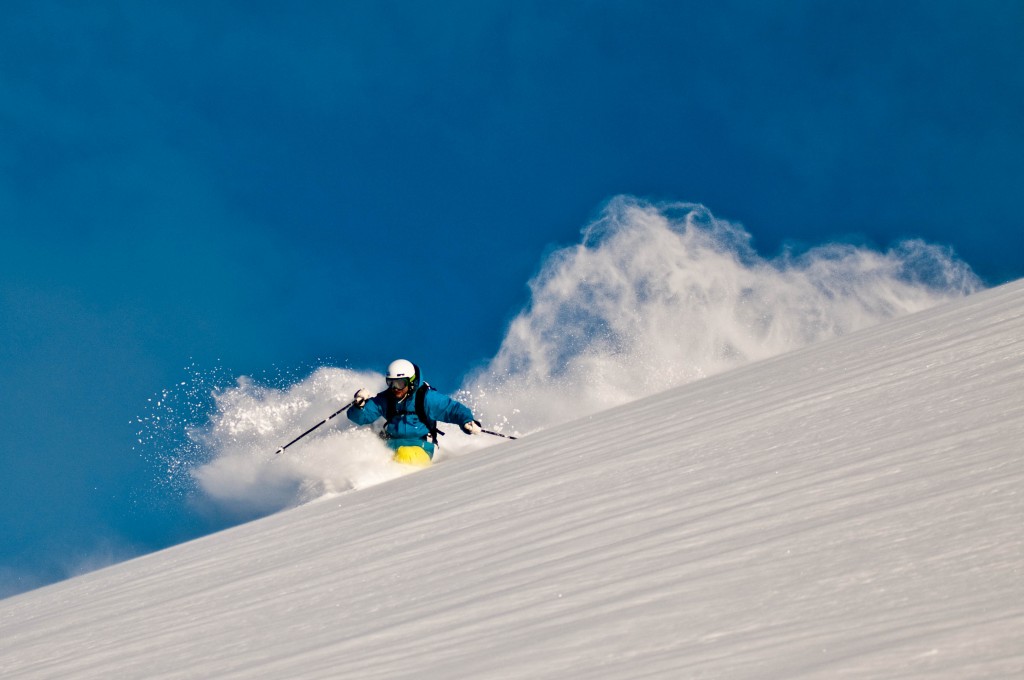Snow & Weather Conditions and Their Impact on Helicopter Skiing
The proverbial heliskiing trip to Canada or Alaska fills the minds eye with blue-sky, white-capped alpine vistas and knee-deep champagne powder as far as the eye can see. Fortunately, this is often the case, and that’s why people go heliskiing. What potential guests have to realize however, is that conditions are not always perfect; winds must blow and snow must fall for us to play in the mountains, and the Canadian Coast and Rocky Mountains are notorious for their whiteouts. Heli skiing and boarding outfits are obviously limited somewhat by these inclement conditions; general industry experience shows that more tree line and gladed skiing takes place during the early and mid-season, and that the high alpine is really only accessed as the spring begins to arrive. Once March and April roll around, the alpine snowpack is generally more stable and the weather better, and ultimately allows for more bluebird days in the high alpine, the holy grail of helicopter skiing.

As for winds, they can come at any time. Helicopters, just as they are often limited by thicker fog, cannot fly in any sort of high winds, and are generally grounded in anything over 30-40km/h. Even if the prevailing winds do not appear particularly strong at the lodge, there may be serious gusting occurring up on and around the peaks, making it very difficult to safely land and pickup/drop off groups of skiers, and ultimately grounding the helicopters for the day. As everyone knows, we cannot see the wind, only the effects of the wind; skiers and boarders are often glad to reap the results of a storm as snow is stripped from certain faces and settles on others.
Fortunately for helicopter skiers in BC, down days are quite rare. The Skeena, Monashee, and Columbia mountains – BC’s central ranges – are very much used to seeing long stretches of beautiful, calm, stable days, with the odd violent and snow-heavy storm thrown in to refresh the runs. As a result, great snowpack, light winds, and more often than not bluebird skies eliminate a large majority of the down days usually seen at heli lodges and make for very happy skiers and boarders.
Lastly and most importantly, safety is paramount in dealing with snow and weather conditions. Heliskiing guides are vastly experienced in the analysis of snow pack, avalanche risk, and general weather forecasting, and will often make decisions that the guests may not understand in the moment. These calls are obviously made for the benefit of the group and generally result in better and safer skiing in the long run; no sense in skiing the big, freshly dumped-on face if it’s all going to avalanche on top of the group. In many ways, this is what makes heliskiing so safe – especially in Canada and Alaska where the safety standards are among the most stringent in the world. Guests are able to relax and enjoy themselves, relying on the helicopter pilot and ski guides to make the decisions that will see everybody through safely while still giving them the most exciting and enjoyable day imaginable.
Related Articles: Skis used for Heli-Skiing, Different Heli-Ski Lodges in BC, Heli-Skiing: A Day in the Life.
Heli Skiing, Heliskiing, Heli Ski, Heliski, Heli Skiing Tour, Heli Skiing Holiday, Heli Skiing BC, Heli Skiing Resorts, Heli Skiing Lodges


